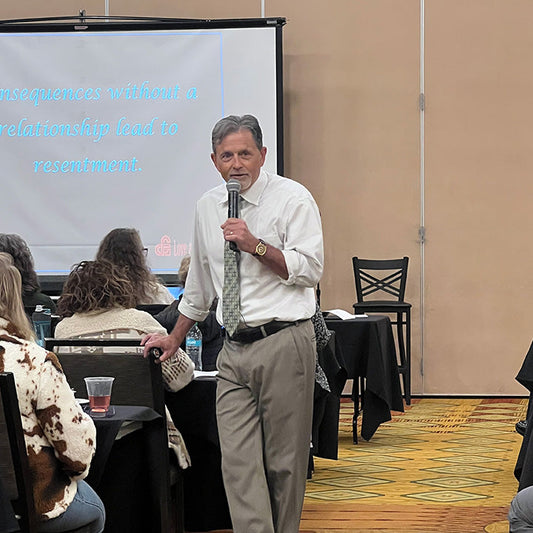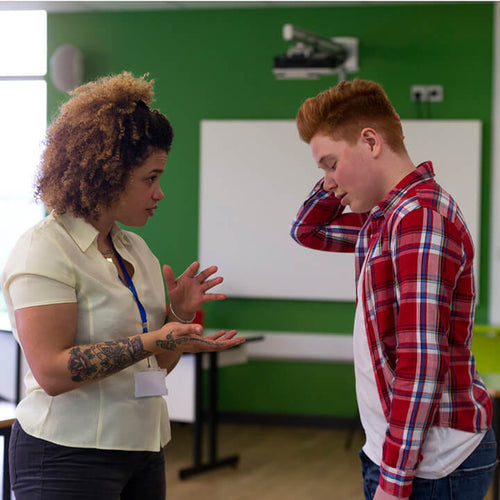In two recent blogs we explored two skills from the 9 Essential Skills for the Love and Logic Classroom® curriculum—Neutralizing Arguing and Empathy. Another critical skill for teachers to master is how to set effective limits with students. Teachers frequently find themselves frustrated by attempting to set limits, only to have students ignore the boundaries within seconds!
By setting ineffective limits, you inadvertently relinquish your control and give away your power. In contrast, effective limits ensure that you maintain your control. The key to setting effective limits is to understand the difference between enforceable and unenforceable statements.
What are Unenforceable Statements?
Unenforceable statements usually take the form of telling students what to do. Every time you tell a student what to do, you risk losing your power. Here are some examples:
- Hand your papers in on time!
- Quit arguing with me!
- Raise your hands when you want to talk!
What are Enforceable Statements?
Love and Logic’s general rule for setting effective limits with students is to avoid telling students what to do and, instead, describe what you will do or allow. Compare these enforceable alternatives:
- I assign full credit to papers handed in on time.
- I’ll listen when your voice is calm.
- I listen to students who raise their hands.
The Power of Questions
Teachers can also use the power of questions to reinforce limits. In fact, we’ve observed over the years that successful teachers spend most of their time asking questions instead of making statements. Examples:
- Which papers receive full credit?
- When do I argue? (after the time for arguing has been set—4:00 p.m. for example)
- Who do I listen to?
Is Empathy Still Matters?
As we described in the blog, Empathy: The Heart of a Love and Logic Classroom, Love and Logic techniques are only effective when used with an abundance of genuine empathy. Empathy encourages students to use the thinking part of their brain instead of reacting with fight, flight, or freeze. Always use empathy and a calm tone when delivering enforceable statements or asking questions.
What are the Supporting Tools for Teachers?
Love and Logic’s nine skills have helped thousands of teachers create genuine learning environments by nurturing respectful and healthy student relationships. Learn more in our book, Teaching with Love and Logic: Taking Control of the Classroom, or through the Love and Logic for the Classroom and School Online webinar.
Thanks for reading!



























































